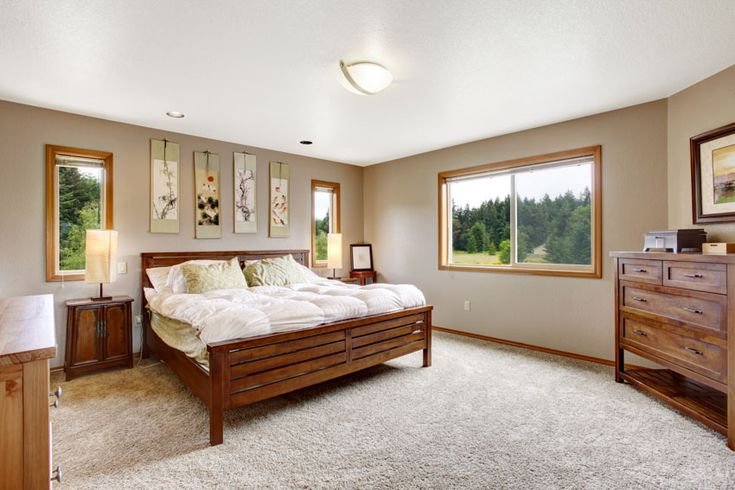Woodworking enthusiasts and furniture manufacturers have long appreciated the beauty and versatility of various types of wood. Among them, it stands out due to its unique blend of durability, aesthetic appeal, and workability. It is increasingly becoming a preferred choice for various indoor and outdoor projects. Whether you’re planning to build furniture, create decorative items, or embark on home improvement projects, understanding Mindi wood and its characteristics can help you make informed decisions.
This article offers an in-depth look at this, including its origins, properties, uses, and maintenance tips. Let’s explore why this type of wood has gained popularity in recent years.
What is Mindi Wood?
Mindi wood, also known as Melia azedarach or Chinaberry, originates from Southeast Asia, primarily Indonesia. It belongs to the mahogany family and is often compared to teak due to its similar properties. However, this is distinct for its light color, fine grain, and smooth texture, which make it an ideal material for furniture, carvings, and decorative applications.
This hardwood is relatively soft compared to other varieties, allowing for easier crafting and carving. Despite its softness, it is highly durable and resistant to pests, such as termites, which contributes to its longevity.
Key Characteristics of Mindi Wood
Before diving into the uses and benefits of it, it is essential to understand its key characteristics, which set it apart from other types of wood.
1. Appearance
This is prized for its light golden-brown color, which may darken slightly with age. Its grain pattern is straight and fine, providing a sleek and consistent look that enhances the aesthetic appeal of furniture and wood products. The uniform grain also minimizes the presence of knots or imperfections, making it ideal for achieving a smooth, clean finish.
2. Durability
Although Mindi wood is softer than other hardwoods like oak or mahogany, it is known for its durability. The wood resists warping, cracking, and splitting, even when exposed to varying temperatures or humidity. Additionally, it has a natural resistance to pests like termites, which is a major advantage in both indoor and outdoor applications.
3. Workability
One of the most significant advantages of Mindi wood is its workability. The wood is easy to cut, shape, and sand, making it an ideal material for intricate carvings or detailed furniture work. It is also highly responsive to both hand tools and machinery, allowing for flexibility in manufacturing processes.
4. Stain and Finish Compatibility
Mindi wood absorbs stains and finishes well, providing versatility in design. Whether you prefer a light, natural finish or a dark, rich stain, it can be customized to suit your style preferences. Its smooth texture also makes it easy to apply paints, varnishes, and other finishes evenly.

Common Uses of Mindi Wood
Due to its favorable characteristics, Mindi wood is used in a wide range of applications, particularly in furniture making and interior décor. Here are some of the most common uses of this versatile wood:
1. Furniture
One of the primary uses of it is in the manufacture of high-quality furniture. From elegant dining tables to luxurious bed frames, it is an excellent choice for both traditional and contemporary furniture designs. Its light color and fine grain complement a variety of décor styles, making it a popular material for both home and office furniture.
2. Carvings and Decorative Items
The soft texture of that makes it an ideal material for carving and intricate woodwork. Artisans often use Mindi wood to create detailed sculptures, decorative wall hangings, and other ornamental items. The wood’s ability to hold fine details ensures that even the most complex designs can be brought to life with precision.
3. Cabinetry
Mindi wood is often used in cabinetry, thanks to its durability and resistance to warping. It is perfect for creating kitchen cabinets, bathroom vanities, and storage units that require long-lasting quality. The wood’s smooth texture and compatibility with various stains and finishes allow for a polished, refined look that enhances the visual appeal of any room.
4. Flooring
Although not as commonly used as oak or maple, it is sometimes used in flooring applications. Its light color brightens up spaces, while its durability ensures that it can withstand regular foot traffic. However, due to its softness, Mindi wood flooring may be better suited for low-traffic areas or rooms that don’t experience heavy wear and tear.
5. Outdoor Furniture
The natural resistance of Mindi wood to pests and moisture makes it a viable option for outdoor furniture. It is often used in patio sets, garden benches, and outdoor dining tables. With proper care and maintenance, it can last for many years, even when exposed to the elements.
Benefits of Using Mindi Wood
Choosing the right wood for your project can be challenging, but it offers several advantages that make it a worthwhile option for various applications. Here are some of the key benefits of using it:
1. Affordability
Compared to other hardwoods like teak or mahogany, it is generally more affordable. Its lower cost does not compromise its quality, making it an attractive option for those looking for a budget-friendly yet high-quality wood material.
2. Aesthetic Versatility
The light color and smooth grain of Mindi wood make it a versatile material that can be customized to suit any design aesthetic. Whether you’re going for a modern minimalist look or a more rustic feel, it can be stained or finished to match your desired style.
3. Pest Resistance
One of the most significant advantages of this is its natural resistance to pests, particularly termites. This characteristic makes it an ideal choice for both indoor and outdoor furniture, as it reduces the risk of damage caused by insects.
4. Easy to Work With
For woodworkers, both professionals and hobbyists, Mindi wood is a dream material. Its softness makes it easy to cut, shape, and sand, while its fine grain ensures a smooth finish. Whether you’re working with hand tools or power tools, it allows for precise craftsmanship.
5. Durability
Despite being relatively soft, it is highly durable and resistant to wear and tear. It holds up well against environmental changes, such as humidity or temperature fluctuations, making it a stable material for long-term projects.
Comparison of Mindi Wood with Other Woods
To better understand the value of it, it’s helpful to compare it with other popular hardwoods like teak, mahogany, and oak.
1. Mindi Wood vs. Teak
Teak is widely regarded for its durability and resistance to water, making it a popular choice for outdoor furniture. While Mindi wood shares some of these properties, it is generally lighter and more affordable. Mindi wood is better suited for indoor applications, though it can be used outdoors with proper care.
2. Mindi Wood vs. Mahogany
Mahogany is known for its deep reddish-brown color and rich grain, which contrasts with the lighter hue of Mindi wood. While both woods are durable, Mindi wood is easier to work with due to its softness. Mahogany tends to be more expensive, making Mindi wood a more cost-effective option for large projects.
3. Mindi Wood vs. Oak
Oak is a dense and heavy wood that is often used in flooring and high-traffic furniture. Mindi wood, on the other hand, is lighter and easier to work with. Oak has a more prominent grain pattern, while Mindi wood offers a finer, more uniform texture. For projects that require detailed craftsmanship, Mindi wood may be the better choice.
How to Care for Mindi Wood
Proper care and maintenance of Mindi wood products can extend their lifespan and keep them looking beautiful for years to come. Here are some tips on how to care for Mindi wood:
1. Regular Cleaning
Dust Mindi wood furniture regularly with a soft cloth to prevent the buildup of dirt and grime. For deeper cleaning, use a mild soap solution and a damp cloth, then dry the surface immediately to avoid water damage.
2. Avoid Direct Sunlight
Prolonged exposure to direct sunlight can cause Mindi wood to fade or discolor over time. To protect your furniture, avoid placing it in areas where it will be exposed to direct sunlight for extended periods.
3. Use Furniture Polish
Applying a high-quality furniture polish every few months can help maintain the luster of Mindi wood. Polishing also helps protect the surface from scratches and wear.
4. Humidity Control
Wood can expand or contract with changes in humidity, so it’s important to maintain a stable indoor environment. Use a humidifier or dehumidifier as needed to prevent warping or cracking.
Conclusion
In conclusion, Mindi wood is a versatile, durable, and aesthetically pleasing material that offers numerous advantages for furniture making, cabinetry, and decorative items. Its affordability, workability, and natural resistance to pests make it a valuable choice for both indoor and outdoor applications. Whether you’re a professional woodworker or a DIY enthusiast, Mindi wood provides a reliable and attractive option for your projects.
